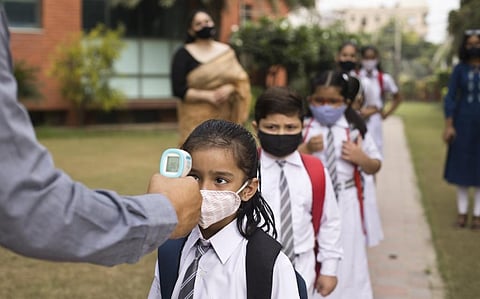Scarred: The COVID-19 pandemic destroyed human capital. Its impact will haunt our future
March 15, 2020: It was the fifth day of the COVID-19 outbreak being officially declared a pandemic by the World Health Organization (WHO). In India, close to 75 districts had reported some 300 active cases.
While the fear was of the immediate future revolving around how the virus would spread and kill, we didn’t realise that it would soon be the planet’s widest pandemic, killing over 6.8 million people by February 2023.
After three years, we have stopped counting the dead and the infections. But, the world is entering the next phase with the pandemic’s many other inflictions that would keep on crippling a large population for years to come.
That year, the world had 2.6 billion people below the age of 20 years, the nursery population for the working force. Or, to put it another way, every third person on the planet who is about to seek a livelihood or might have joined the workforce recently.
This population was in a stage of their life that is called building the architecture of their future: Going to schools to acquire education, getting vaccinated for many diseases to remain healthy and acquiring skills necessary for pursuing livelihood.
All these together are called the human capital. The more a person has this capital, the higher the chance of gainfully employed. And they, together with high human capital, build a thriving world economy / working force. This population group will make up 90 per cent of prime-age adults in 2050, according to the World Bank.
In a first analysis of the pandemic’s impact on this human capital, the Bank said it is the gravest shock in a century. Thus, the world is left with less human capital, or a hardly prepared and skilled workforce for the immediate future.
Its analysis Collapse and Recovery: How the COVID-19 Pandemic Eroded Human Capital and What to Do about It released recently, said “the pandemic may have led to a clear-cut collapse in human capital.”
Building human capital starts with the first five years of a child that lays the foundation for a healthy and learning existence. After this, education sets the population on a path to get skills till 20 years; and by the age of 25 years, the workforce deploys this skill to take up livelihood, deciding on their future of employment and readying for their own family.
This is the ecosystem of the global economy as well. The Bank finds that the very foundation of this has been shaken by the pandemic.
First, millions of children have missed regular health checkups, vital vaccination dosages and the access to healthy food being delivered through health centres or schools, most of them being in developing and poor countries.
One billion school-going children missed at least a year of schooling, said the analysis. Schools in 180 countries, including India, were closed by the end of March 2020. After a year, schools were still closed, or partially closed in 94 countries.
The analysis infers that each month of school closure led to one month of lost learning. These children also missed on acquiring the skills required to join the future workforce. Many young people lost their jobs as a result of the pandemic.
The learning losses observed today could reduce future earnings around the world by $21 trillion, said the analysis on the economic impact of this collapse of the human capital. There is another phenomenon that will haunt the post-pandemic workforce and indirectly the global economy.
It is called “scarring”. The Bank’s definition of this is: “Being unemployed or holding a low-paying job when one first enters the labour market can result in scarring.” Evidence suggests that scarring can last for up to 10 years, warned the Bank.
We might soon hear an official declaration on the end of the pandemic. It made each of us a potential victim of the deadly virus. Those who survived rejoice. But, enduring its future wreaths seems tough.


